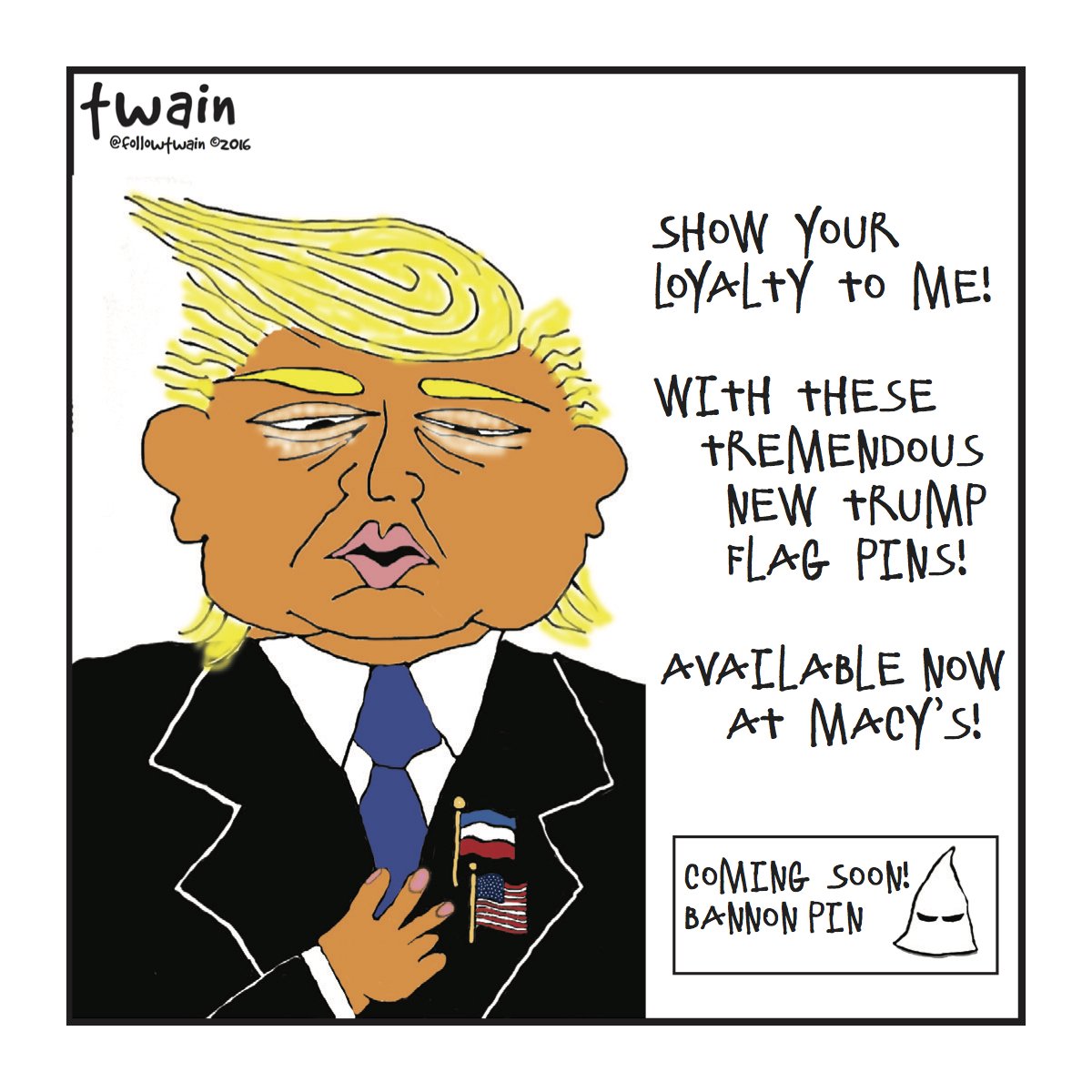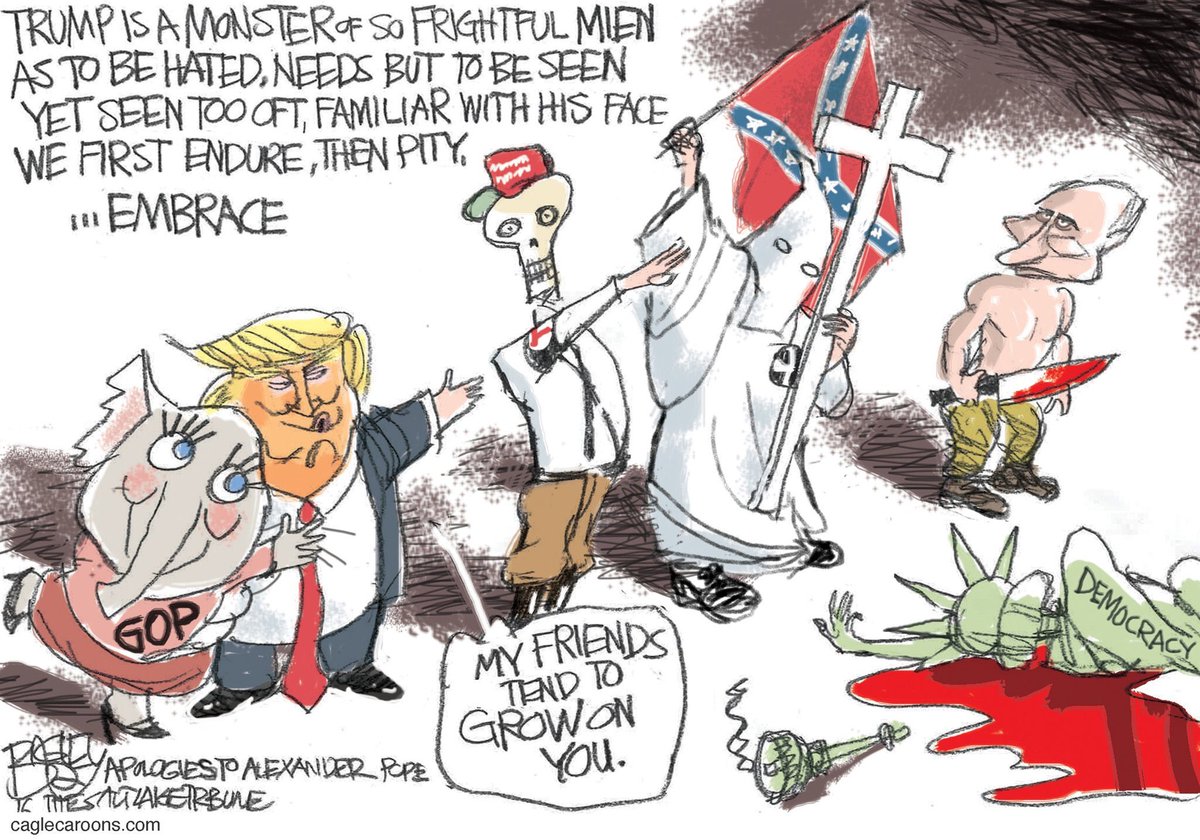Bad
News for America’s Workers
 As US President-elect
Donald Trump fills his cabinet, what have we learned about the likely direction
and impact of his administration’s economic policy?
As US President-elect
Donald Trump fills his cabinet, what have we learned about the likely direction
and impact of his administration’s economic policy?
To be sure, enormous
uncertainties remain. As in many other areas, Trump’s promises and statements
on economic policy have been inconsistent.
While he routinely accuses others of
lying, many of his economic assertions and promises – indeed, his entire view
of governance – seem worthy of Nazi Germany’s “big lie” propagandists.
Trump will take charge
of an economy on a strongly upward trend, with third-quarter
GDP growing at an impressive annual rate of 3.2% and unemployment at 4.6%
in November.
By contrast, when President Barack Obama took over in 2009, he
inherited from George W. Bush an economy sinking into a deep recession.
And,
like Bush, Trump is yet another Republican president who will assume office
despite losing the popular vote, only to pretend that he has a mandate to
undertake extremist policies.
"There really is
no silver lining to the cloud that now hangs over the US and the world."
 The only way Trump
will square his promises of higher infrastructure and defense spending with
large tax cuts and deficit reduction is a heavy dose of what used to be called
voodoo economics.
The only way Trump
will square his promises of higher infrastructure and defense spending with
large tax cuts and deficit reduction is a heavy dose of what used to be called
voodoo economics. Decades of “cutting the fat” in government has left little to cut: federal government employment as a percentage of the population is lower today than it was in the era of small government under President Ronald Reagan some 30 years ago.
With so many former
military officers serving in Trump’s cabinet or as advisers, even as Trump
cozies up to Russian President Vladimir Putin and anchors an informal alliance
of dictators and authoritarians around the world, it is likely that the US will
spend more money on weapons that don’t work to use against enemies that don’t
exist.
If Trump’s health secretary succeeds in undoing the careful balancing
act that underlies Obamacare, either costs will rise or services will
deteriorate – most likely both.
During the campaign,
Trump promised to get tough on executives who outsource American jobs. He is
now holding up the news that the home heating and air conditioning manufacturer
Carrier will keep some 800 jobs in my home state of Indiana as proof that his
approach works.
Yet the deal will cost taxpayers $7 million, and still allow
Carrier to outsource 1,300 jobs to Mexico. This is not a sound industrial or
economic policy, and it will do nothing to help raise wages or create good jobs
across the country. It is an open invitation for a shakedown of the government
by corporate executives seeking handouts.
Similarly, the
increase in infrastructure spending is likely to be accomplished through tax
credits, which will help hedge funds, but not America’s balance sheet: such
programs’ long track record shows that they deliver little value for money.
The
cost to the public will be especially high in an era when the government can
borrow at near-zero interest rates. If these private-public partnerships are
like those elsewhere, the government will assume the risks, and the hedge funds
will assume the profits.
The debate just eight
years ago about “shovel-ready” infrastructure seems to be a distant memory. If
Trump chooses shovel-ready projects, the long-term impact on productivity will
be minimal; if he chooses real infrastructure, the short-term impact on
economic growth will be minimal. And back-loaded stimulus has its own problems,
unless it is managed extremely carefully.
If Trump’s pick for US
Treasury Secretary, the Goldman Sachs and hedge-fund veteran Steven Mnuchin, is
like others from his industry, the expertise he will bring to the job will be
in tax avoidance, not constructing a well-designed tax system.
The “good” news
is that tax reform was inevitable, and was likely to be undertaken by Speaker
of the House Paul Ryan and his staff – giving the rich the less progressive,
more capital-friendly tax system that Republicans have long sought.
With the
abolition of the estate tax, the Republicans would finally realize their
long-held ambition of creating a dynastic plutocracy – a far cry from the
“equality of opportunity” maxim the party once trumpeted.
Large tax cuts and
large expenditure increases inevitably lead to large deficits. Reconciling this
with Trump’s promise to reduce the deficit will probably entail a return to
Reagan-era magical thinking: despite decades of proof to the contrary, this time
the stimulus to the economy brought by tax cuts for the rich will be so large
that tax revenues will actually increase.
This story doesn’t end
well for Trump’s angry, displaced Rust Belt voters. Unhinged budgetary policies
will induce the US Federal Reserve to normalize interest rates faster.
Some see
incipient inflation (given the low unemployment rate); some believe the long
period of ultra-low interest rates has distorted capital markets; and some want
to “replenish their ammunition,” so that the Fed can lower interest rates
should the economy slow down again.
Trump has argued that
the Fed should raise interest rates. The Fed, which took the first step toward
normalization in early December, will almost certainly deliver – and Trump will
soon regret what he wished for.
There’s a good chance that the monetary
contraction will outweigh the fiscal stimulus, curbing the Obama growth spurt
currently underway.
Higher interest rates will undercut construction jobs and
increase the value of the dollar, leading to larger trade deficits and fewer
manufacturing jobs – just the opposite of what Trump promised. Meanwhile, his
tax policies will be of limited benefit to middle-class and working families –
and will be more than offset by cutbacks in health care, education, and social
programs.
If Trump starts a
trade war – by, say, following through on his vow to impose a 45% tariff on
imports from China and to build a wall on the US border with Mexico – the
economic impact will be even more severe.
Trump’s cabinet of billionaires could
continue to buy their Gucci handbags and $10,000 Ivanka bracelets, but ordinary
Americans’ cost of living would increase substantially; and without components
from Mexico and elsewhere, manufacturing jobs would become even scarcer.
To be sure, a few new
jobs will be created, mainly in the lobbying shops along K Street in Washington,
DC, as Trump refills the swamp that he promised to drain.
Indeed, America’s bog
of legal corruption is likely to reach a depth not seen since President Warren
G. Harding’s administration in the 1920s.
And there really is no
silver lining to the cloud that now hangs over the US and the world. As bad as
his administration will be for America’s economy and workers, its policies on
climate change, human rights, the media, and ensuring peace and security are
likely to be no less damaging for everyone else.
© 2016 Project
Syndicate
Joseph E. Stiglitz is
University Professor at Columbia University. His most recent book is The Price of
Inequality: How Today's Divided Society Endangers Our Future. Among
his many other books, he is the author of Globalization
and Its Discontents, Free Fall:
America, Free Markets, and the Sinking of the World Economy, and
(with co-author Linda Bilmes) The Three
Trillion Dollar War: The True Costs of the Iraq Conflict. He
received the Nobel Prize in Economics in 2001 for research on the economics of
information.